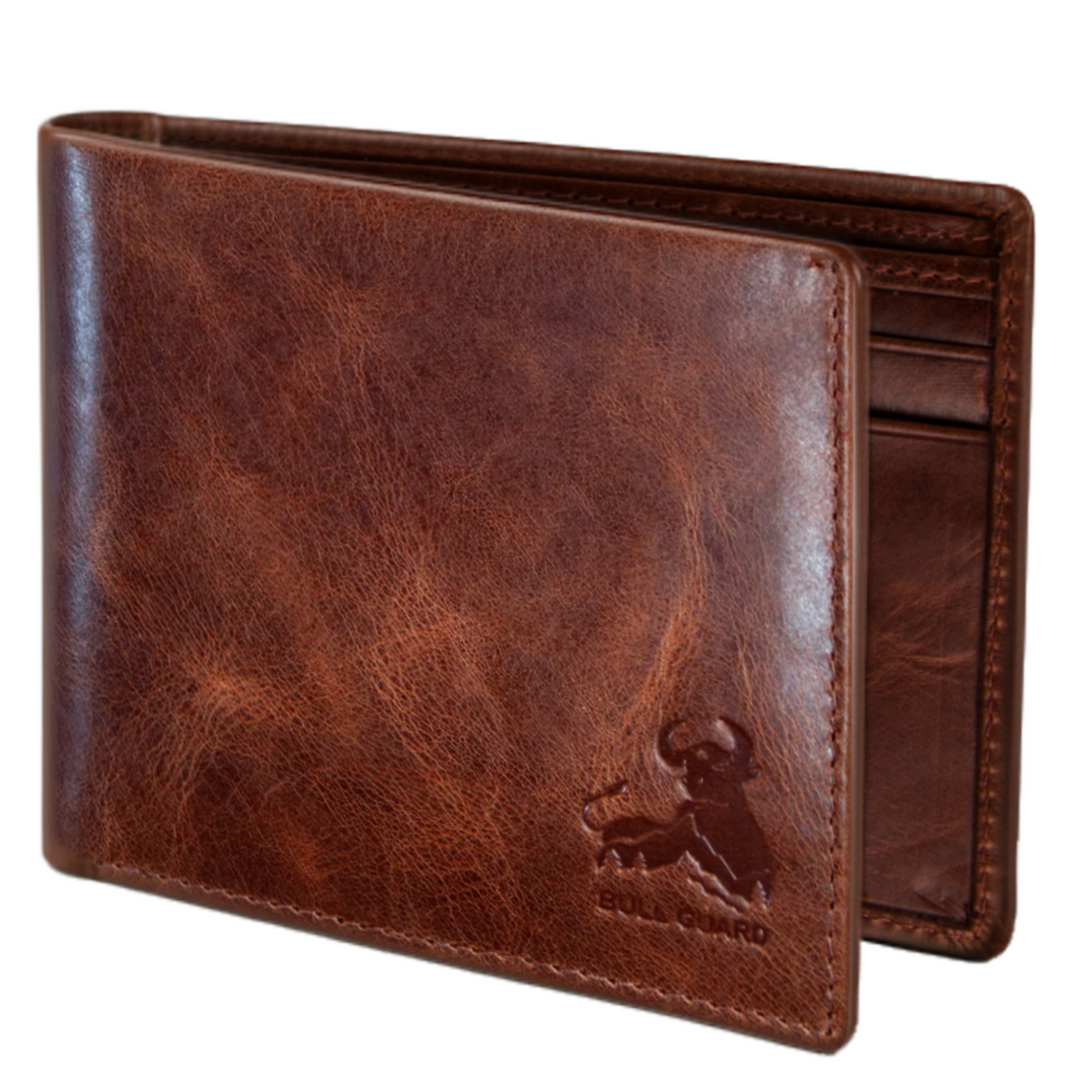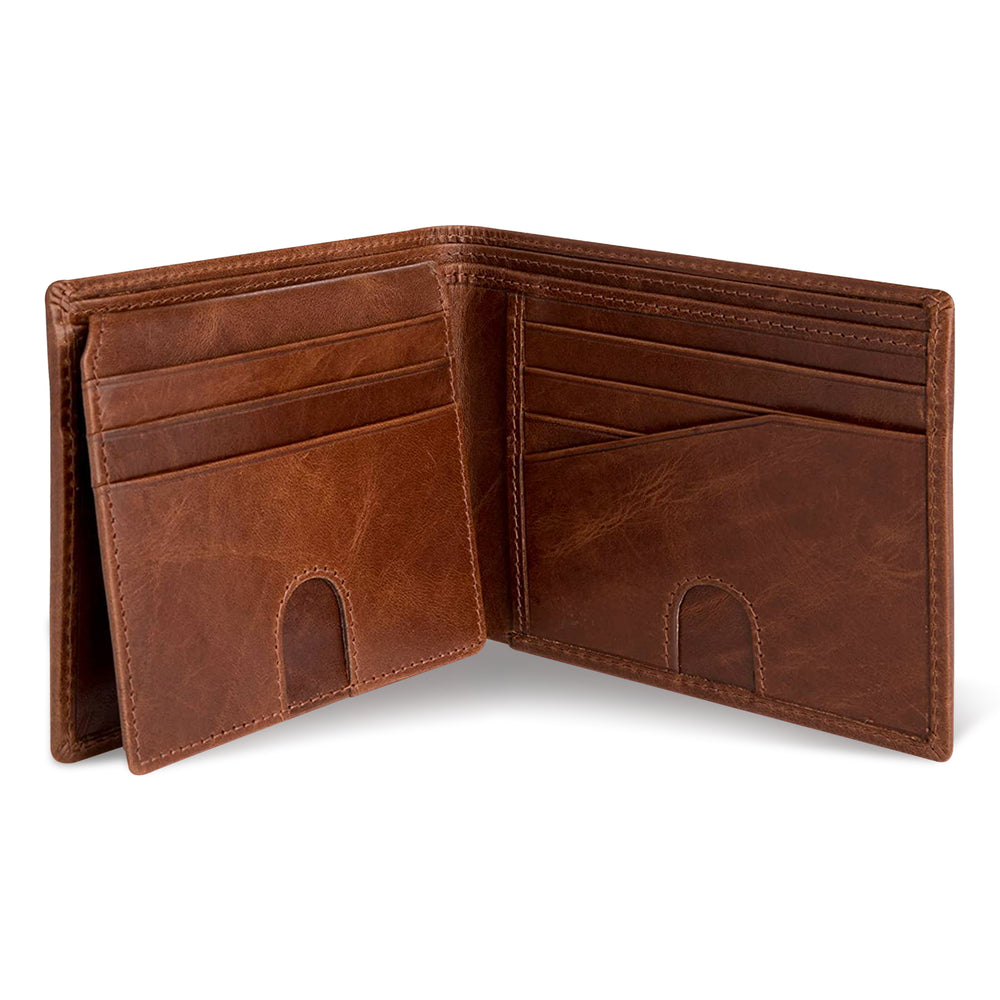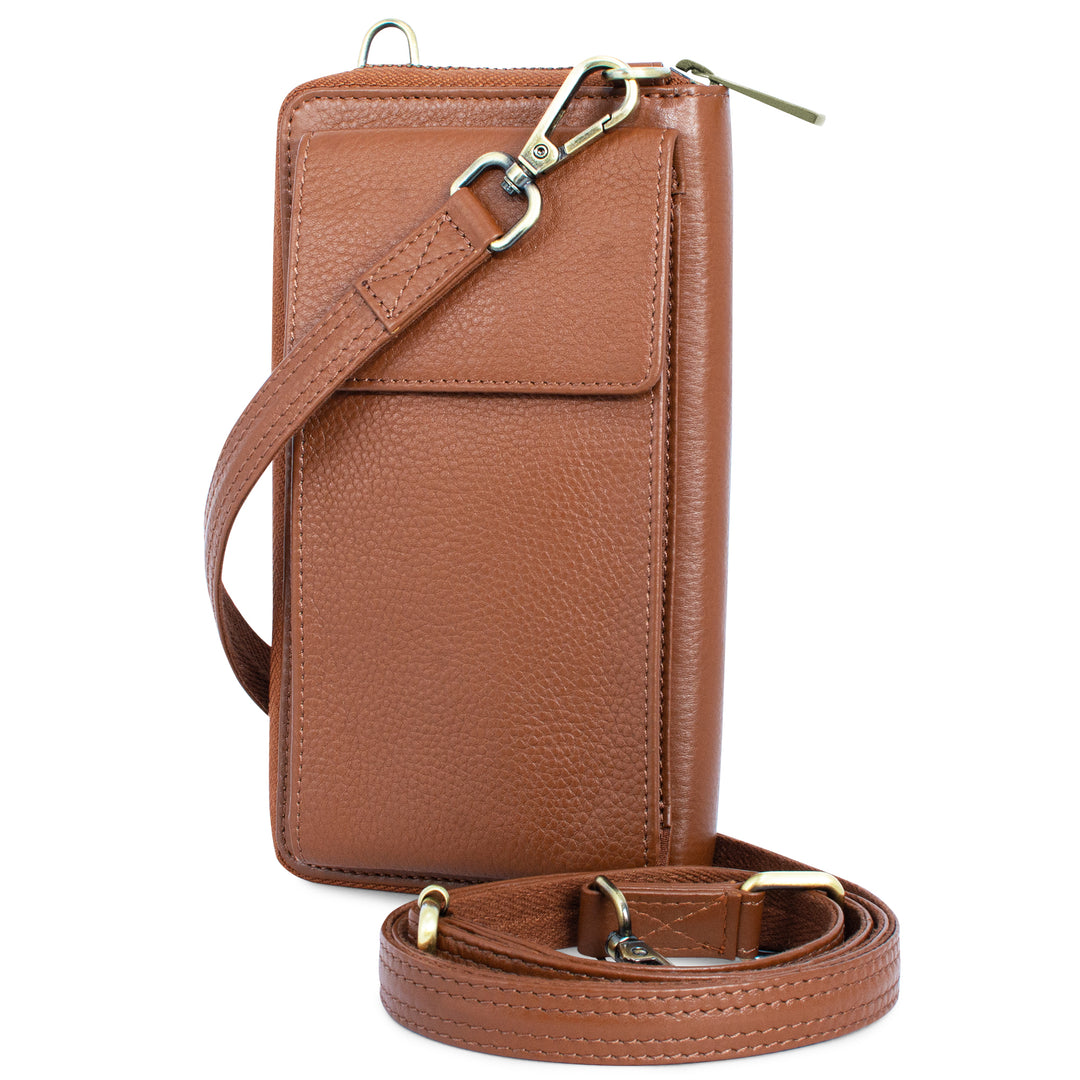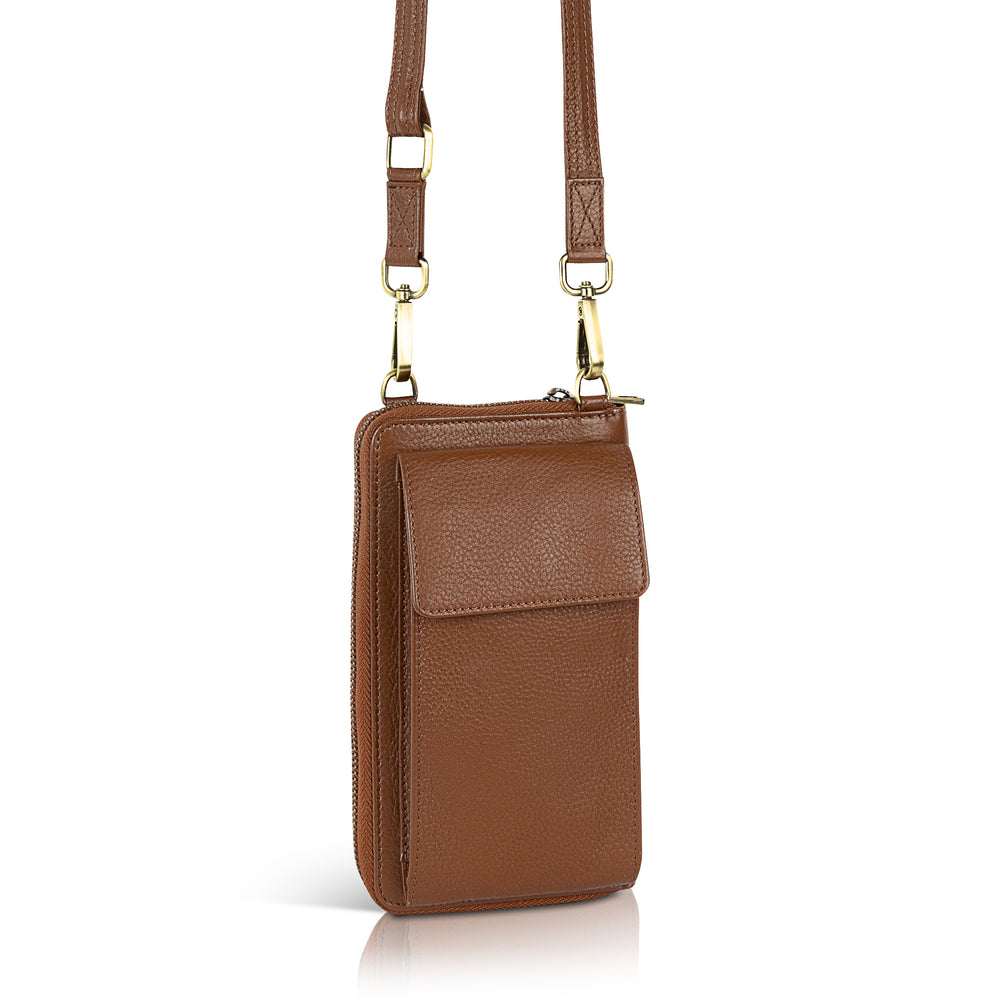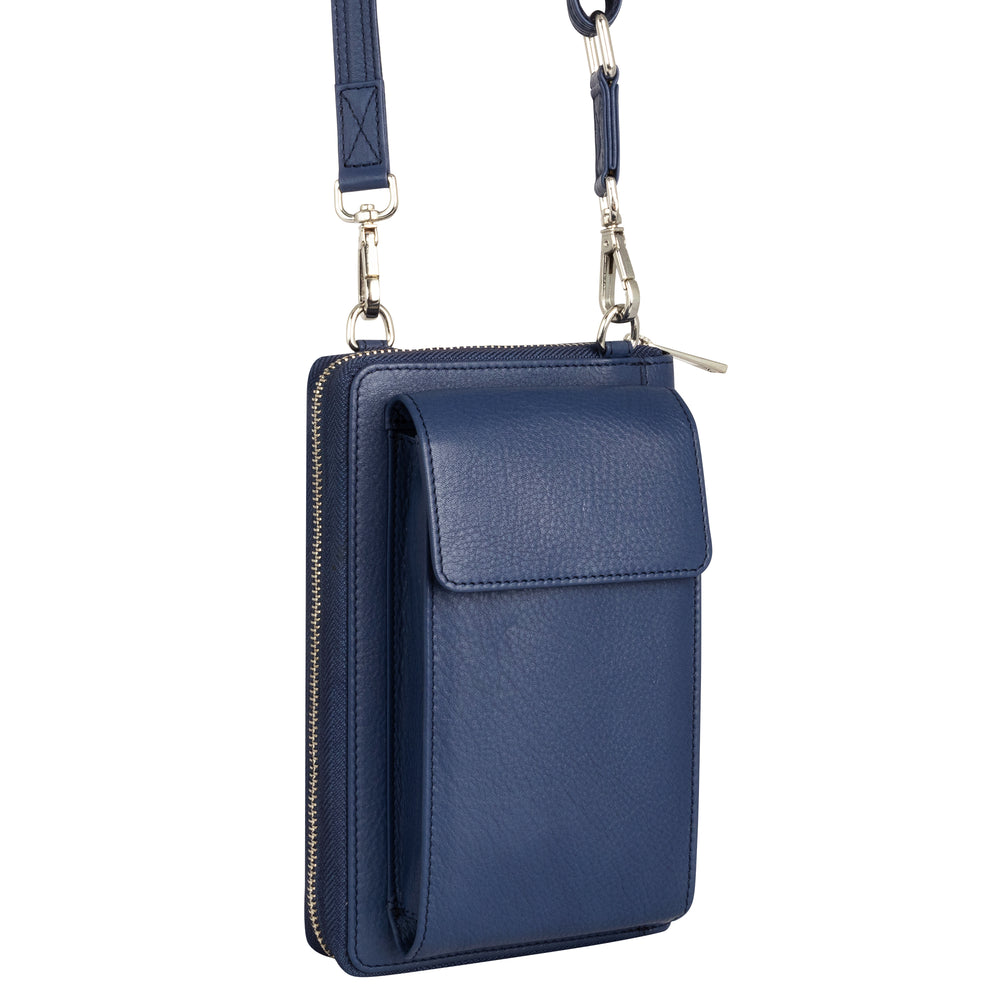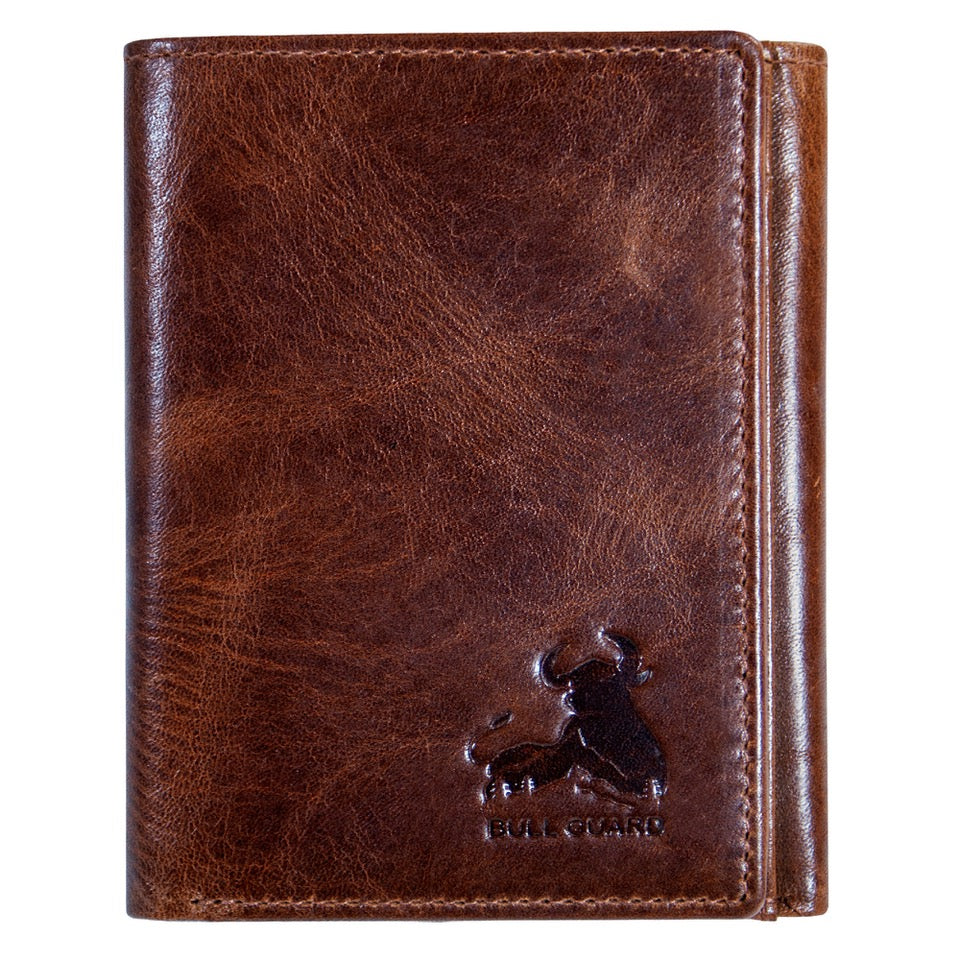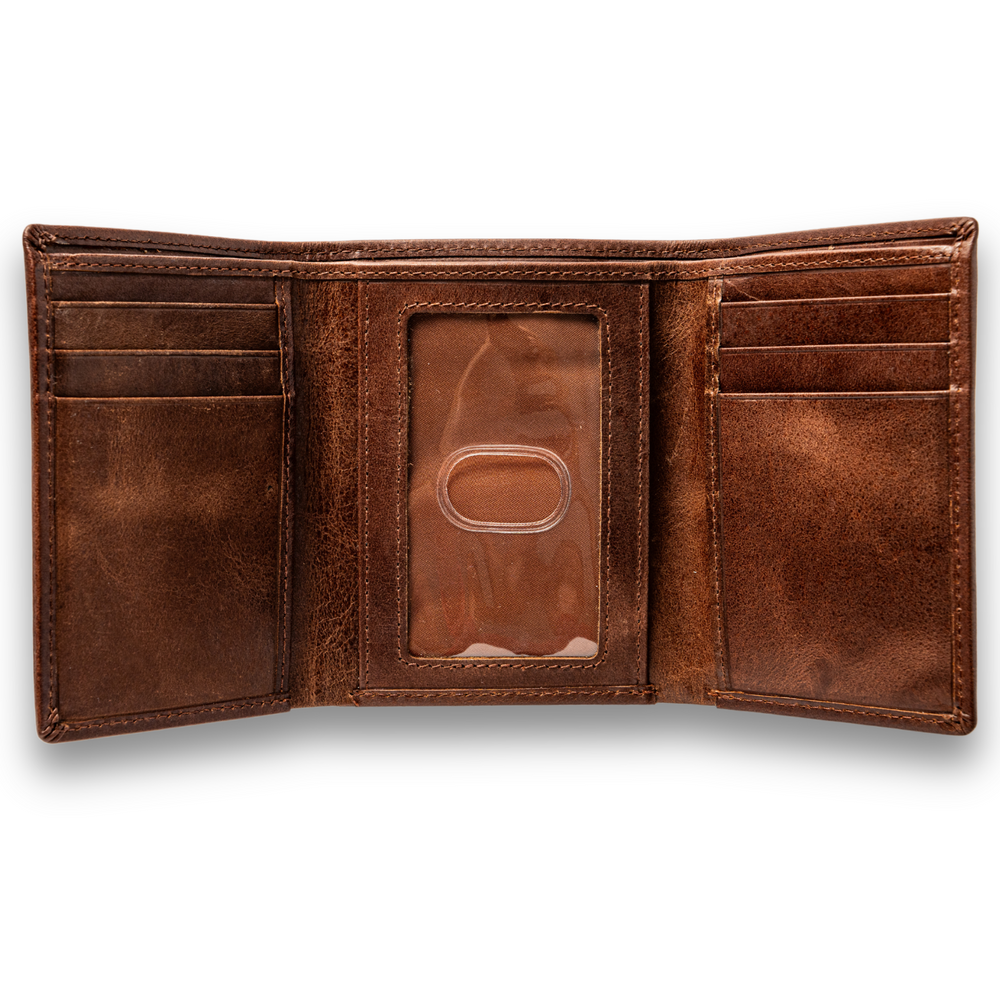Key Takeaways
- The best leather jackets go beyond fashion and become enduring companions that age gracefully.
- Premium materials and honest construction are essential for crafting exceptional leather jackets.
- The quality of leather, tanning process, and construction determine a jacket's longevity and character.
- Investing in a high-quality leather jacket ensures it will develop character over decades rather than deteriorate quickly.
The Ultimate Leather Jacket: Why Quality and Heritage Matter
The best leather jackets transcend fashion, they become living companions that evolve with your story. Like the full-grain leather wallets I craft at Bull Guard, a truly exceptional jacket starts with premium materials and honest construction. The difference between a $200 fashion piece and a $2,000 heirloom lies in the leather quality, tanning process, and construction integrity that determines whether your jacket will crack after two seasons or develop character over two decades.
What makes a leather jacket worthy of the "best" designation? First, the hide itself, full-grain or top-grain leather that retains the natural grain pattern and fiber strength. Second, construction details that matter: reinforced stress points, quality hardware like YKK zippers, and hand-finished seams. Third, the intangible factor of fit and feel, how the jacket moves with your body and adapts to your lifestyle, whether navigating city streets or weekend adventures. For those seeking a refined everyday accessory, consider the Magnetic Money Clip Card Case with ID as a perfect complement to your leather jacket style.
The best leather jackets use full-grain or top-grain hides, feature reinforced construction with quality hardware, and develop a unique patina through wear. Expect to invest $500-$3,000 for authentic craftsmanship that lasts decades rather than seasons.
A Living History: Leather Jackets in Culture and Craft

The leather jacket's journey from functional military gear to cultural icon mirrors the same authenticity we pursue at Bull Guard. Originally designed for aviators and motorcyclists who needed protection from wind and weather, these jackets earned their reputation through performance, not marketing. The 1953 film "The Wild One" transformed Marlon Brando's Perfecto into a symbol of rebellion, while later icons like Indiana Jones proved leather could be both rugged and refined.
Understanding leather types reveals why some jackets endure while others deteriorate. Full-grain leather, the gold standard, retains the hide's complete grain layer, offering maximum durability and the ability to develop rich patina over time. Top-grain leather, while slightly processed, still maintains excellent strength and character. Corrected grain and bonded leather, often found in budget jackets, sacrifice longevity for initial appearance, a compromise that shows within months of regular wear.
| Leather Type | Durability | Patina Development | Typical Price Range |
|---|---|---|---|
| Full-Grain | Exceptional (20+ years) | Rich, natural aging | $800-$3,000+ |
| Top-Grain | Very Good (10-15 years) | Moderate patina | $400-$1,200 |
| Corrected Grain | Fair (3-5 years) | Limited aging | $150-$400 |
For more on how to choose the right accessories for your style, you might also enjoy our guide to best wallets for men.
Styles That Stand the Test of Time and Trends
The Perfecto Motorcycle Jacket
Best for: Urban edge and authentic motorcycle culture heritage. The asymmetric zipper, wide lapels, and belted waist create the iconic silhouette that's remained unchanged since Schott NYC's 1928 original. Modern versions maintain the classic proportions while incorporating contemporary fits and premium hides.
Bomber Flight Jacket
Best for: Versatile layering and casual sophistication. Born from military aviation needs, the bomber's ribbed cuffs and waistband, along with its shorter length, make it ideal for pairing with everything from jeans to chinos. Quality leather jackets in bomber style offer exceptional versatility for modern wardrobes.
Café Racer Minimalist Style
Best for: Clean lines and streamlined aesthetics. The café racer strips away excess details, focusing on fit and proportion. Its close-cut silhouette and minimal hardware appeal to those who appreciate understated elegance, much like our philosophy at Bull Guard where function drives form.
When selecting among these classic styles, consider your lifestyle and body type. The Perfecto's structured shoulders suit broader frames, while the café racer flatters leaner builds. Bombers work universally but require careful attention to length proportions.
If you appreciate minimalist design, you may also find our Slim Leather Wallet aligns perfectly with your aesthetic preferences.
Leather Jacket Anatomy: What to Look For Beyond the Label
Construction quality separates investment pieces from disposable fashion. Examine the stitching first, quality jackets feature reinforced seams at stress points like armholes and pocket corners. The thread should match or complement the leather color, with consistent tension and no loose ends. Panel construction matters too; more panels typically indicate better fit and drape, though they also increase manufacturing complexity and cost.
Hardware tells the story of a manufacturer's commitment to quality. YKK zippers, particularly their heavy-duty lines, provide smooth operation and longevity that cheap alternatives cannot match. Metal hardware should feel substantial and show proper finishing, no rough edges or thin plating that will wear through quickly. The lining, often overlooked, affects both comfort and durability; quality cotton or silk linings breathe better than synthetic alternatives.
Fit remains paramount regardless of construction quality. A leather jacket should allow comfortable movement while maintaining its silhouette. The shoulders must fit properly, the shoulder seam should sit at your natural shoulder point. Sleeves should reach your wrist bone when arms are at your sides, with enough room to layer a sweater underneath without binding.
Leather Types Compared: Cowhide, Horsehide, Lambskin, and More

Cowhide dominates the market for good reason, it strikes the ideal balance between durability, workability, and aging characteristics. Full-grain cowhide develops rich patina over years of wear, becoming suppler while maintaining structural integrity. Expect a 2-3 week break-in period as the leather molds to your body's contours.
Horsehide represents the premium tier, particularly Japanese Shinki Hikaku tannery horsehide prized by collectors. Denser and initially stiffer than cowhide, horsehide requires patience, sometimes months to fully break in, but rewards with unmatched durability and unique grain patterns. The investment often exceeds $2,000 for quality horsehide jackets.
Lambskin offers luxurious softness and elegant drape, making it ideal for dress occasions rather than rugged daily wear. While beautiful, lambskin lacks the resilience of cowhide and horsehide, showing wear more readily. Shearling combines lambskin exterior with wool interior, providing exceptional warmth but adding bulk unsuitable for layering.
| Leather Type | Durability | Break-in Period | Best Use | Price Range |
|---|---|---|---|---|
| Cowhide | Excellent | 2-3 weeks | Daily wear, motorcycle | $500-$1,500 |
| Horsehide | Outstanding | 2-6 months | Heirloom quality | $1,500-$3,000+ |
| Lambskin | Moderate | Immediate | Dress occasions | $400-$1,200 |
| Shearling | Good | 1-2 weeks | Cold weather | $600-$2,000 |
To further explore the best options for carrying essentials, check out our recommendations for Card Holder with or without Airtag, a practical choice for those who value both security and style.
The World's Leading Leather Jacket Brands and What They Offer
Schott NYC - American Heritage Leader
Best for: Classic Perfecto styling with proven durability
Since 1913, Schott NYC has defined American leather jacket craftsmanship. Their iconic 618 Perfecto, worn by Marlon Brando, remains virtually unchanged, asymmetric front zip, wide lapels, and heavyweight steerhide construction. Made in New Jersey factories, Schott jackets start around $900 and represent reliable quality without premium pricing.
Japanese Artisans - Premium Horsehide Specialists
Best for: Collectors seeking vintage-inspired perfection
Brands like Flat Head, Freewheelers & Co., and The Real McCoy's elevate leather jackets to art forms. Using Shinki Hikaku horsehide and obsessive attention to vintage details, down to period-correct thread and hardware, these jackets command $2,500+ but deliver uncompromising quality. Each piece requires extensive break-in but develops character unmatched by mass production.
Himel Bros - Bespoke Craftsmanship
Best for: Custom fits and unique specifications
David Himel's Canadian workshop produces made-to-measure jackets using premium horsehide and vintage patterns. With 6-month lead times and $3,000+ pricing, Himel Bros caters to enthusiasts wanting personalized details, custom measurements, hardware choices, and leather selection create truly individual pieces.
Buffalo Jackson - Modern Outdoor Appeal
Best for: Contemporary styling with outdoor functionality
This newer brand bridges traditional leather craftsmanship with modern outdoor needs. Their bomber and field jacket styles incorporate practical features like multiple pockets and weather-resistant treatments while maintaining classic leather aesthetics at accessible $400-$800 price points.
For more inspiration on thoughtful gifting, don't miss our curated list of Best Selling Gifts for those who appreciate quality craftsmanship.
How to Choose and Measure for Your Ideal Leather Jacket
Accurate measurements prevent costly sizing mistakes with leather jackets. Measure your chest at its fullest point, shoulders from seam to seam across your back, and sleeve length from shoulder point to wrist. Compare these measurements to brand-specific size charts, leather jacket sizing varies significantly between manufacturers.
When trying on jackets, bring a thin sweater to test layering capability. The jacket should feel snug but allow comfortable arm movement and shoulder rotation. Leather stretches approximately half a size during break-in, so avoid oversizing. Pay attention to sleeve length, leather sleeves cannot be lengthened significantly, making proper initial fit crucial.
Leather Jacket Sizing and Fit Guide

Finding the perfect fit for your leather jacket requires precise measurements and understanding how leather behaves over time. Start by measuring your chest at its fullest point, shoulder width from seam to seam, and sleeve length from shoulder to wrist bone. The jacket should feel snug but allow comfortable arm movement and shoulder rotation. Leather stretches approximately half a size during break-in, so avoid oversizing. Pay attention to sleeve length, leather sleeves cannot be lengthened significantly, making proper initial fit crucial.
The collar should sit flat against your neck without gapping, and the jacket's hem should hit at your natural waistline or slightly below. When zipped, you should be able to layer a thin sweater underneath without restriction. Quality jackets feature articulated sleeves and gussets that enhance mobility while maintaining structure.
Fit Rule: A properly fitted leather jacket should feel like a second skin, close enough to show your silhouette but comfortable enough for daily wear. Remember, leather molds to your body over time, creating a truly personalized fit.
Consider your intended use when selecting fit. Motorcycle jackets require closer fits for safety and aerodynamics, while casual jackets can accommodate slightly looser cuts for layering versatility.
For those who prefer a classic design with extra storage, the Bifold with Flip Up ID offers both functionality and timeless appeal.
Seasonal Leather Jacket Considerations
Winter leather jackets demand different features than their spring counterparts. Look for jackets with quilted or shearling linings, storm flaps, and wind-resistant closures. Thicker leather (1.3-1.5mm) provides better insulation, while lighter weights (0.9-1.1mm) work well for transitional seasons.
For wet climates, choose jackets treated with natural waxes or oils that enhance water resistance without compromising breathability. Avoid heavily coated leathers that prevent the material from developing its characteristic patina. Quality hardware becomes essential in harsh weather, stainless steel or brass components resist corrosion better than standard metal fixtures.
Summer leather jackets benefit from perforated panels, lighter lambskin construction, and minimal lining. These features maintain the classic leather aesthetic while providing necessary ventilation during warmer months.
To discover more about versatile accessories for travel and daily use, read our article on the best small crossbody cell phone wallets for summer travel everyday ease.
Leather Jacket Investment and Value
The best leather jackets represent significant investments that reward careful selection with decades of wear. Entry-level quality jackets from established brands start around $500-800, while premium artisan pieces command $2,000-5,000. This price difference reflects leather grade, construction complexity, and manufacturing location.
Calculate cost-per-wear over the jacket's lifespan, a $1,500 jacket worn twice weekly for 20 years costs roughly $0.72 per wear. Compare this to replacing cheaper alternatives every few years, and quality becomes economical. Well-maintained leather jackets often appreciate in value, particularly limited editions or vintage pieces from respected manufacturers.
| Price Range | Leather Quality | Construction | Expected Lifespan |
|---|---|---|---|
| $200-400 | Corrected grain | Machine stitched | 2-5 years |
| $500-800 | Top grain | Reinforced seams | 10-15 years |
| $1,000-2,000 | Full grain | Hand-finished details | 20-30 years |
| $2,500+ | Premium hides | Artisan crafted | Lifetime |
Consider resale value when investing in premium pieces. Established brands like Schott NYC, Himel Bros, and select Japanese manufacturers maintain strong secondary markets, making them safer investments for collectors. For those who value a traditional wallet style, the Classic Leather Trifold is a reliable choice that stands the test of time.
Sustainable Leather Jacket Choices
Ethical leather jacket production emphasizes responsible sourcing, traditional tanning methods, and local manufacturing. Vegetable-tanned leather, while requiring longer processing times, creates more environmentally friendly products that age beautifully. Chrome tanning, though faster, involves chemicals that impact both workers and ecosystems.
Support brands that maintain transparency about their supply chains and tanning processes. Companies like Bull Guard prioritize ethical sourcing and traditional craftsmanship methods that honor both artisan skills and environmental responsibility. Look for certifications from organizations like the Leather Working Group, which promotes sustainable practices industry-wide.
Buying vintage or secondhand leather jackets represents the ultimate sustainable choice, giving existing pieces new life while avoiding additional resource consumption. Quality vintage jackets often feature superior construction and unique character impossible to replicate in modern production.
Proper care extends jacket lifespan significantly, reducing environmental impact through longevity. Regular conditioning, appropriate storage, and professional repairs when needed transform leather jackets into generational pieces rather than disposable fashion items.
Future of Leather Jacket Design

Modern leather jacket innovation focuses on integrating traditional craftsmanship with contemporary functionality. Technical features like RFID-blocking pockets, smartphone compartments, and improved ventilation systems enhance practicality without compromising classic aesthetics. These additions reflect our evolving daily needs while maintaining the timeless appeal that makes leather jackets enduring wardrobe staples.
Sustainable innovations include alternative tanning methods using eco-friendly processes that reduce environmental impact while preserving the quality and character of genuine leather.
Frequently Asked Questions
What factors determine the longevity and character development of a leather jacket?
The longevity and character of a leather jacket depend on the quality of the leather hide, the tanning process, and the craftsmanship involved in its construction. Full-grain or top-grain leather, vegetable tanning, reinforced stitching, and quality hardware all contribute to a jacket that ages gracefully and develops a unique patina over time.
How do full-grain and top-grain leather differ in terms of durability and aging?
Full-grain leather retains the natural grain and fiber strength, making it the most durable and able to develop a rich patina with use. Top-grain leather is slightly sanded to remove imperfections, offering a smoother finish but generally less rugged durability and a subtler aging process compared to full-grain.
Why is investing in a high-quality leather jacket more beneficial than purchasing a budget option?
A high-quality leather jacket is crafted from premium materials and built to last decades, developing character and comfort with wear. Budget options often use lower-grade leather and shortcuts in construction, leading to cracking, fading, or deterioration after only a few seasons, making them less valuable over time.
What construction details should I look for to ensure a leather jacket is well-made and durable?
Look for reinforced stress points, strong and even stitching, quality hardware such as YKK zippers, and hand-finished seams. These details ensure the jacket withstands daily wear and adapts comfortably to your lifestyle, providing both durability and timeless style.



